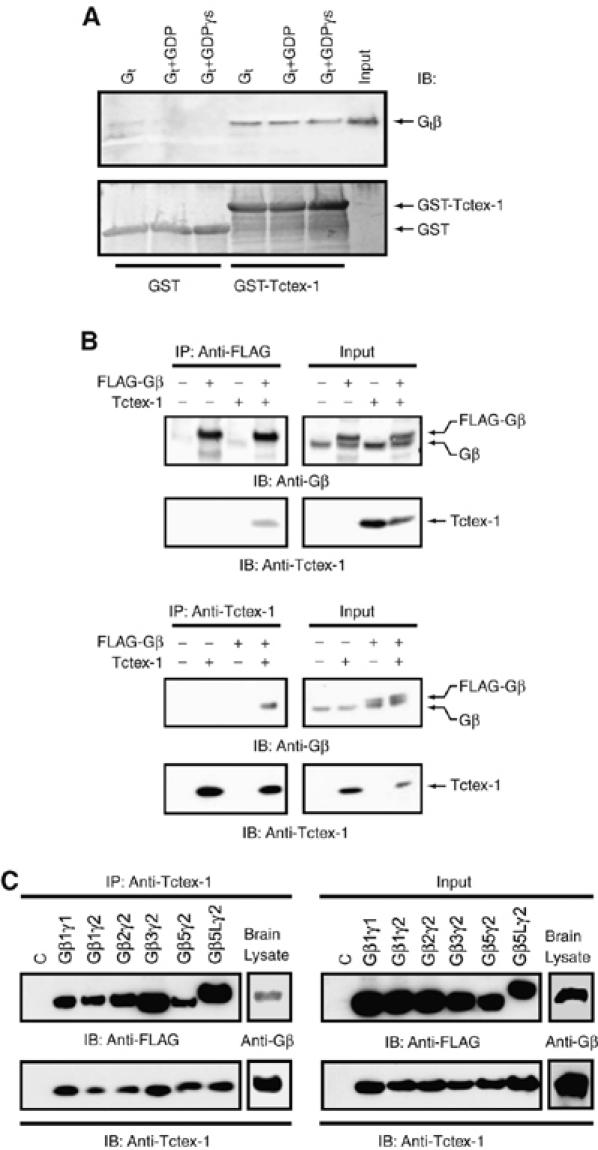Figure 1.

Gβγ interacts with Tctex-1. (A) Transducin Gαtβ1γ1 (Gt) interacts with GST-fused Tctex-1. GST alone (lanes 1–3) or GST-fused Tctex-1 (lanes 4–6) (300 nM) were incubated with Gt (40 nM) (lanes 1 and 4), plus 10 μM GDP (lanes 2 and 5) or plus 10 μM GTPγS and 5 mM MgCl2 (lanes 3 and 6). Purified Gt was loaded as a control in lane 7. The bound samples were analyzed by SDS–PAGE followed by immunoblotting (IB) for Gβ using anti-Gβ antibody (top panel). A Coomassie blue-stained gel in the bottom panel shows that equal amounts of the GST and GST–Tctex-1 were used. (B) Gβγ and Tctex-1 co-IP in HEK cells. HEK cells were transfected with FLAG-tagged Gβ1 and Tctex-1 cDNAs as indicated and cell lysates were immunoprecipitated (IP) with anti-Tctex-1 antibody (top panel) or with anti-FLAG antibody (bottom panel) and subjected to SDS–PAGE, followed by Western blot analysis (IB) using anti-Gβ and anti-Tctex-1 antibodies. A 20 μg weight of total cell lysate was analyzed as input (right half of each panel) to show expression levels of Gβ and Tctex-1. The doublet seen in the anti-Gβ blots correspond to the endogenous Gβ and the FLAG-tagged Gβ proteins. (C) Tctex-1 interacts with several overexpressed Gβ isoforms, and with endogenous Gβ in brain lysates. HEK293 cells were cotransfected with FLAG-tagged Gβ1, β2, β3, β5 or β5L, along with Gγ1 or Gγ2 and Tctex-1 expression vectors. Tctex-1 was IP with anti-Tctex-1 antibody and the immunocomplexes were analyzed by Western blotting using anti-Tctex-1 antibody to detect Tctex-1 and anti-FLAG antibody to detect the FLAG-tagged Gβ subunits that co-IP with Tctex-1. Endogenous Tctex-1 was immunoprecipitated from E15 embryonic mouse brain lysate using anti-Tctex-1 antibody and analyzed by Western blotting for Tctex-1 and the associated brain Gβ subunit using anti-Tctex-1 and anti-pan Gβ antibody, respectively. A 20 μg weight of total cell lysate was analyzed by as input to show protein expression levels of Tctex-1, FLAG-tagged Gβ and endogenous Gβ using anti-Tctex-1, anti-FLAG and anti-pan Gβ antibodies, respectively. All images are representative of three independent experiments.
